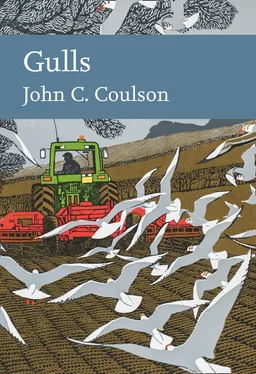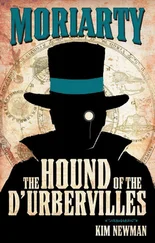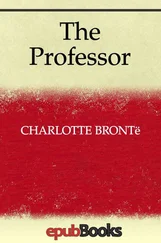1 ...8 9 10 12 13 14 ...29 Mediterranean Gull × Black-headed Gull
Herring Gull × Lesser Black-backed Gull
Herring Gull × Yellow-legged Gull
Lesser Black-backed Gull × Yellow-legged Gull
Western Gull (Larus occidentalis) × Glaucous-winged Gull
Great Black-backed Gull × American Herring Gull
Herring Gull × Glaucous Gull
Glaucous-winged Gull × Glaucous Gull
American Herring Gull × Kelp Gull
Iceland Gull × Thayer’s Gull
Common Gull × Ring-billed Gull
Mediterranean Gull × Common Gull
Laughing Gull × Black-headed Gull
Laughing Gull × Ring-billed Gull
Herring Gull × Caspian Gull
In most cases, adults that are believed to be hybrids have been recognised by the intermediate nature of their plumage and the colouring of their legs and bill, but in only a very few instances has the plumage been described for adults that are known to be hybrids and were ringed as such before they fledged. It is usually believed that hybrid gulls show intermediate characters of their parents in terms of plumage, bill colour and leg colour, but this is not always the case, and in several instances they display minor characteristics not evident in either parent.
There is little doubt that some hybrids can share similarities with, and resemble, other gull species. As a result, it is sometimes difficult to accept a new sight record of a species from a geographical area where it has not been previously or convincingly been recorded before, and to confirm that it is not a hybrid between species that breed nearby. Rarity committees have a particularly difficult job with gulls, and ideally need DNA samples obtained from feathers of the presumed rarity to be certain of the record.
Some hybrid gulls, when adult, have been known to pair and mate with an individual of one of their parent species, producing offspring known as back-crosses. Even less is known about the plumage of these offspring, but it is likely that they differ both from the original species and from the hybrid parent. Breeding between pairs of hybrid gulls has not been recorded. However, hybridisation and subsequent breeding is likely to produce at least three different types of individuals, all of which vary in some respect from the original parent species as well as from each other. The immature plumages of hybrid gulls are poorly known and in many cases their origin has been assumed only because of their intermediate characteristics.
Eventually, after several generations of breeding, a particular gene can be transferred via the offspring of a hybrid from one of the parent species to the other. This has been recorded in the American Herring Gull, which appears to have acquired a gene from the Great Black-backed Gull in North America, presumably through hybrids between the two species. To date, this gene has not been recorded in the European Herring Gull.
In Belgium and the Netherlands, mixed pairs of Yellow-legged Gulls and either Lesser Black-backed Gulls or Herring Gulls have occurred particularly frequently. For example, more than 15 mixed pairs were reported in Rotterdam annually from 1986 to 1998 (van Swelm, 1998) and more in more recent years, and others have been frequently identified in at least five other colonies in the Netherlands and Belgium. Hybrid individuals that have reached adulthood and that are presumed to be crosses between Yellow-legged and Lesser Black-backed gulls have also been recorded in Belgium breeding with Lesser Black-backed Gulls, producing back-crosses.
Inter-species breeding is more frequent when one of the gull species is rare and spreading into the main range of the other. For example, when Lesser Black-backed Gulls first started to breed in the Netherlands in the 1930s, a few individuals joined large colonies of Herring Gulls and several mixed breeding pairs were recorded. Despite the fact that both species are now numerous and breed in the same colonies, hybrid pairs still occur, although they are infrequent. Very few pairings between these two species have been reported in Britain, except when experimentally induced (see below).
When Herring Gulls spread to Iceland in the 1920s, individuals formed mixed pairs with Glaucous Gulls, and by 1966 about half of the adults there were considered to be hybrids. These were distinctive in showing small but variable amounts of dark pigment on the tips of the primaries (Ingolfsson, 1970).
When Mediterranean Gulls first started to breed in Britain, early pioneers frequently paired with Black-headed Gulls (as they have done so elsewhere). In fact, this is ongoing, as a few individuals continue to spread north from the south coast of England. The recent arrival of a few adult Yellow-legged Gulls in Britain has seen them join both Herring Gull and Lesser Black-backed Gull colonies. Again, they have formed mixed pairs that on some occasions have managed to fledge hybrid chicks. Perhaps this inter-species breeding occurs because individuals arriving in new areas are mainly of the same sex and fail to find a mate of the same species.
In a study carried out on the island of Skokholm in south-west Wales, Mike Harris (1970) switched large numbers of eggs between Lesser Black-backed Gull and Herring Gull nests. The chicks that subsequently hatched imprinted on their foster parents and apparently considered that they were the same species, so that when they matured they chose a mate of that species, forming a series of mixed-species pairs. The young produced and reared by these mixed pairs were hybrids between the parent species and usually (but not always) showed plumage and leg colour intermediate between the two. At least 40 of these hybrids later returned to breed on Skokholm and on nearby Skomer, and most paired with adult Herring or Lesser Black-backed gulls. The chicks they produced were back-crosses and, when adult, were more similar to one of the parent species than the first generation of hybrids. While some of these hybrids reared chicks, it is not known whether they and their offspring were less viable. However, as each generation was produced, presumably both parent species incorporated small amounts of the genetic material belonging to the other species into their make-up despite appearing to be ‘pure’ Herring or Lesser Black-backed gulls (as discussed above for the American Herring and Great Black-backed gulls in North America).
BREEDING
Gulls are monogamous, although a few cases of male Kittiwakes breeding simultaneously with two females at different nest sites have been recorded. Pairs of gulls produce only one brood each breeding season, but if their eggs are lost, many will lay a replacement clutch. While most gulls breed annually during a well-defined breeding season, some individuals skip breeding for a year. The exception is the Swallow-tailed Gull on the Galapagos Islands, which does not have a clear-cut breeding season and nests throughout the year, with individuals breeding at nine- to 10-month intervals.
Breeding sites
Gulls typically favour bare ground and areas with short vegetation for nesting, or floating vegetation on lakes or marshes. The main exceptions are Bonaparte’s Gull, which regularly nests in trees; Common, Black-headed and American Herring Gulls, which occasionally nest in low trees at a small number of localities; Kittiwakes, which favour narrow ledges on steep sea cliffs; and Herring, Glaucous and Ivory gulls, which sometimes use larger cliff ledges.
Ground nesting makes gulls particularly susceptible to mammalian predators, and most species nest only at sites where these predators are usually unable to reach the colonies, such as small islands or isolated peninsulas. Gulls vary in their ability to deter avian predators. Adults will attack birds of prey and corvids, but in parts of northern Scandinavia White-tailed Eagles (Haliaeetus albicilla) are having an increasing impact on breeding gulls – this is a future risk for Britain, since the species has been reintroduced here and its numbers are increasing. In addition, adult gulls at breeding sites suffer occasional predation from Peregrine Falcons (Falco peregrinus). Ravens and crows are a problem for some smaller gulls, but in general they are attacked and prevented from entering dense gull colonies. Individual Herring, Lesser Black-backed and Great Black-backed gulls, as well as Great Skuas (Stercorarius skua), have developed the ability to reach and prey on eggs and young gulls at otherwise well-protected nesting sites (sometimes even attacking their own species).
Читать дальше












